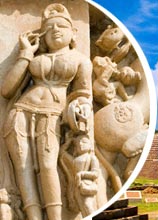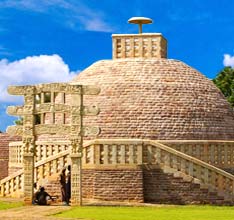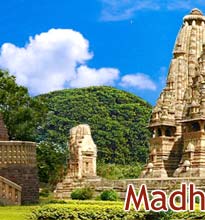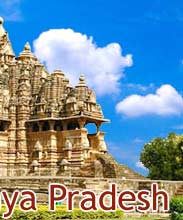 Madhya
Pradesh is not only the geographic heart of India, but can also be
termed as the cultural and religious nucleus of the country. The term
'diversity' gets best expression in the place. In fact, the people of
the state provide the first glimpse towards its multi-faceted culture.
It conjoins people, belonging to different religions, castes and
communities, and presents a harmonious blend of the true ethos of India.
As far as religion is concerned, Madhya Pradesh domiciles people
belonging to all the major religions viz. Hinduism Islam, Christianity,
Buddhism, Jainism and Sikhism.
Madhya
Pradesh is not only the geographic heart of India, but can also be
termed as the cultural and religious nucleus of the country. The term
'diversity' gets best expression in the place. In fact, the people of
the state provide the first glimpse towards its multi-faceted culture.
It conjoins people, belonging to different religions, castes and
communities, and presents a harmonious blend of the true ethos of India.
As far as religion is concerned, Madhya Pradesh domiciles people
belonging to all the major religions viz. Hinduism Islam, Christianity,
Buddhism, Jainism and Sikhism.Even though the state is home to people belonging to numerous religions and ethnic backgrounds, it truly reflects the concept of Indian secularism. If there are Hindu shrines in Ujjain, Jabalpur and Khajuraho, there are also Muslim mosques and Buddhist monasteries in places like Bhopal and Sanchi. In fact, peaceful co-existence and mutual co-operation unify the people of Madhya Pradesh and present its unique cultural conction. Add to it, the numerous tribal populaces scattered around its regions and the cultural vibrancy of the place stands out amongst all the states in India.
Tribal People of Madhya Pradesh
Madhya Pradesh has three distinct tribal groups, namely Gonds, Bhils and Oraons. Gonds, who were once the ruling clans of most parts of the state, are the highest in number. The western part of Madhya Pradesh is home to the Bhils, a colorful warrior tribe. The Oraons is the other distinct group and dominates the eastern side of the state. Other minor tribes, like Kols, Bhilalas, Murias and Korkens, are scattered around the state and contribute towards its animated tribal heritage.
These tribes were earlier semi-nomadic, but live in small and distinct communities today and strive towards preservation of their age-old beliefs and culture. For instance, the rhymesters and singers of the Gond tribe still eulogize the legendary character of Lingo-pen, believed to be the originator of the tribe. The Pondwani and the Lachmanjati legends are very popular among the Gonds and are as mythical as the Mahabharata and the Ramayana.
Apart from folklore, the tribal songs remain intrinsically fused with the culture of the tribal people of the state, and cupy a place of paramount importance in their lives. There are ceremonial songs pertaining to birth and marriage. Moreover, the folktales, riddles, and proverbs also form an important part of their tribal heritage. People also engage in many fun activities, whih serve didactic purpose. The most noteworthy amongst them is the practice of 'Ghotul' amongst the Muria clan.
'Ghotul' is actually a hut where young children of the clan gather and learn about the moral standards and beliefs of the tribe. Another unique traditional activity is the marriage ceremony of the Bhils and Bhilalas. People of this clan choose their spouse in a festival fair known as Bhagoriya. In case, both the girl and boy harbor mutual and positive feelings, they elope with each other and afterwards are accepted as man and wife.
As a part of their vivacious culture and lifestyle, the Adivasis of Madhya Pradesh display a colorful array of traditional dresses and ornaments. Major male population wears a dhoti and a headdress. In the eastern regions of the state, males wear a Safa (head cloth), whereas Paga (turban) is preferred in the western parts of the state. A jacket called Bandi or Mirzai forms important attire in the Malwa and Buldelkhand regions. The tribal women generally adorn themselves with colorful lehengas (skirts), cholis (blouses) and traditional jewelry.









